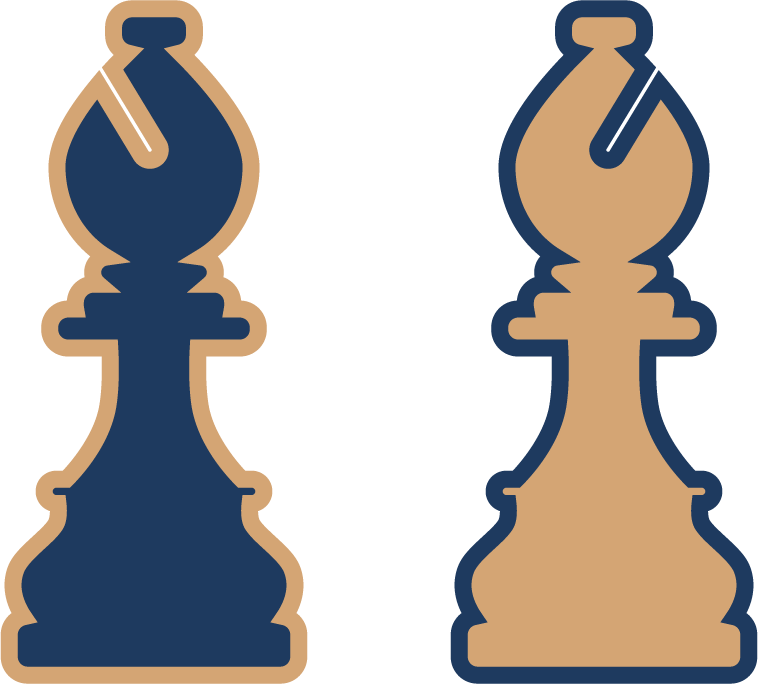What if the key to achieving success lies not in external resources, but in how you perceive the world around you? The way you think can shape your path to success, whether in business, personal life, or even longevity. Entrepreneurs who embrace an abundance mindset often turn challenges into opportunities, while others remain stuck in limiting beliefs.
Research from Yale and Miami University shows that a positive mindset can extend your lifespan by up to 7.5 years. In the post-pandemic world, businesses that adapt with a growth-oriented approach thrive, while those focused on limitations struggle. Stanford psychologist Carol Dweck’s foundational work highlights how your mindset directly impacts your ability to grow and succeed.
This article explores the core conflict between scarcity and growth mindsets. It examines how your mindset choice influences tangible outcomes like business success and personal fulfillment. Ready to discover which mindset drives real success? Let’s dive in.
Key Takeaways
- Your mindset determines how you approach challenges and opportunities.
- An abundance mindset helps entrepreneurs transform weaknesses into strengths.
- Positive thinking can extend your lifespan by up to 7.5 years.
- Businesses with a growth mindset adapt better in changing landscapes.
- Carol Dweck’s research highlights the power of a growth-oriented approach.
Introduction: Understanding Scarcity vs Growth Mindset
Success often starts with how you view the world—either as a place of limits or endless possibilities. Stephen Covey, in his book The 7 Habits of Highly Effective People, introduced the idea of a scarcity mentality as a “finite pie” worldview. This perspective sees resources as limited, creating a zero-sum game where one person’s gain is another’s loss.
In corporate environments, this mindset is often reinforced through limited promotions or tight budgets. Employees may feel they must compete for a small slice of the pie. On the other hand, entrepreneurs with an abundance mindset see opportunities everywhere. They believe resources can expand, and success is not a zero-sum game.
The “mental pie” analogy helps explain these two perspectives. A scarcity mindset views the pie as fixed, while an abundance mindset sees it as expandable. This difference shapes how people approach challenges and opportunities. For example, someone with a scarcity mindset might see a new project as a cost, while an abundance thinker views it as an investment.
Research from Strategic Coach highlights how language reflects these mindsets. Scarcity-focused individuals often talk about costs and risks, while abundance thinkers emphasize investments and rewards. A 2007 UC Davis study even found that gratitude, a key component of an abundance mindset, can improve mental and physical health.
Understanding these mindsets is the first step toward unlocking your potential. Whether in business or personal life, your perspective on resources and opportunities can shape your path to success.
What Is a Scarcity Mindset?
Your perception of resources can shape your entire approach to life and work. A scarcity mindset is rooted in the belief that resources—whether time, money, or opportunities—are limited. This perspective often leads to fear, competition, and a focus on short-term gains.
The Zero-Sum Game Mentality
In corporate settings, this mindset is evident in the competition for promotions. Employees may feel that one person’s success means another’s failure. This zero-sum thinking creates a culture of rivalry rather than collaboration.
Startups, too, often fall into this trap. Entrepreneurs, fearing competition, may hoard resources instead of sharing them. This approach can stifle innovation and limit growth.
The Language of Scarcity
Language reflects this mindset. Terms like “costs,” “security,” and “status” dominate conversations. According to Strategic Coach, these words reinforce a focus on limitations rather than possibilities.
This language can become self-fulfilling. When people talk about scarcity, they start to see it everywhere. The Yale aging study even found that negative self-perception can harm mental and physical health.
Understanding the scarcity mindset is crucial. It’s the first step toward recognizing how it shapes your actions and beliefs. By identifying this pattern, you can begin to shift toward a more abundant way of thinking.
What Is a Growth Mindset?
The way you think about resources and opportunities can redefine your path to success. A growth mindset is rooted in the belief that potential is limitless. It focuses on learning, development, and the ability to transform challenges into stepping stones.
This perspective encourages individuals to see setbacks as opportunities for improvement. Unlike a scarcity-driven approach, a growth-oriented mindset thrives on possibilities. It fosters resilience, creativity, and a willingness to embrace change.

The Power of Possibility
Carol Dweck’s research highlights how a growth mindset enhances developmental intelligence. It allows individuals to view challenges as opportunities rather than obstacles. This shift in thinking is crucial for personal and professional growth.
In networked business models, this mindset fuels exponential growth. Leaders who embrace it see clients as multipliers, not just transactions. Tony Robbins’ peer group theory also emphasizes the importance of surrounding yourself with like-minded individuals who inspire growth.
The Language of Abundance
Strategic Coach’s 12 abundance language substitutions provide a roadmap for reframing thoughts. Words like “investments” and “transformations” replace scarcity-driven terms like “costs” and “risks.” This shift in language reinforces a focus on opportunities.
For example, reframing “clients” as “multipliers” changes the way businesses approach relationships. It fosters collaboration and long-term success. This linguistic shift is a cornerstone of cultivating an abundance mindset.
By adopting this language, individuals and organizations unlock their full potential. It’s a powerful tool for leadership and personal development.
Scarcity vs Growth Mindset: Key Differences
The way your brain processes challenges can determine your success. A scarcity mindset focuses on limitations, while an abundance mindset sees potential everywhere. These perspectives shape not only your decisions but also your brain’s neural pathways.
Neuroscience shows that a scarcity-driven approach activates the amygdala, the brain’s fear center. This leads to stress and decision paralysis. In contrast, a growth-oriented mindset engages the prefrontal cortex, enhancing creativity and problem-solving.
Harvard research highlights how cognitive focus differs between these mindsets. Scarcity narrows attention, limiting problem-solving abilities. Abundance broadens it, fostering innovation and adaptability. This difference directly impacts stress levels and decision-making capacity.
Here’s a side-by-side comparison of language and outcomes:
| Scarcity Mindset | Growth Mindset |
|---|---|
| Focuses on costs and risks | Emphasizes investments and rewards |
| Leads to stress and paralysis | Encourages action and resilience |
| Sees resources as limited | Views potential as limitless |
Understanding these differences is crucial. Your mindset shapes your reality, influencing how you approach challenges and opportunities. By recognizing these patterns, you can shift toward a more abundant way of thinking.
How Scarcity Mindset Holds You Back
The way you approach challenges can either open doors or keep them shut. A scarcity mindset often creates barriers that limit progress. It fosters fear, stress, and a narrow focus on immediate concerns, leaving little room for growth or innovation.
Fear of Failure and Missed Opportunities
When you believe resources are limited, fear of failure becomes overwhelming. This fear can paralyze decision-making, leading to missed opportunities. A Forbes survey found that 68% of professionals experience “opportunity blindness” due to a scarcity-driven focus.
For example, many employees avoid career changes because they fear losing stability. This hesitation can stall personal and professional development. In startups, resource hoarding often leads to failure, as teams miss out on collaborative opportunities.
Impact on Mental Health and Well-being
A scarcity mindset doesn’t just affect your work—it impacts your health. APA research shows it correlates with 23% higher cortisol levels, leading to chronic stress. Over time, this stress can increase cardiovascular risks and weaken the immune system.
UC Berkeley studies reveal that scarcity narrows cognitive bandwidth, making it harder to solve problems effectively. This mental strain can lead to burnout, affecting both personal and professional life.
Shifting away from this mindset is crucial for achieving your goals. By focusing on possibilities rather than limitations, you can improve your mental and physical well-being while unlocking new opportunities.
How Growth Mindset Fuels Success
Unlocking your full potential starts with how you approach challenges and opportunities. A growth mindset empowers individuals to see setbacks as stepping stones and to focus on continuous improvement. This perspective not only drives personal development but also fosters professional success.

Embracing Challenges and Learning
People with a growth mindset thrive on challenges. They view obstacles as opportunities to learn and grow. For example, MIT research shows that teams with an abundance-driven approach are 37% more innovative. This collaborative spirit leads to breakthroughs and long-term success.
Oprah Winfrey’s gratitude practice is a testament to this mindset. By focusing on positive things, she amplified her achievements and built a legacy. Gratitude shifts the way you perceive challenges, turning them into valuable lessons.
Building Stronger Relationships and Networks
A growth mindset also strengthens relationships. LinkedIn data reveals that abundance thinkers have 37% larger professional networks. These connections open doors to new opportunities and collaborations.
Salesforce’s win-win deal structures highlight the profitability of this approach. By focusing on mutual success, businesses create lasting partnerships. Strategic Coach’s “Value Creation Process” further emphasizes the exponential returns from network effects.
Professionals with this mindset report 2.3x more promotions. Their ability to adapt and innovate sets them apart. By surrounding themselves with positive influences, they create a cycle of continuous growth and achievement.
Shifting from Scarcity to Growth Mindset
Transforming your mindset can unlock doors to new opportunities and success. Moving from a scarcity-driven perspective to an abundance mindset requires intentional actions and a focus on positivity. By adopting practices like gratitude and surrounding yourself with supportive influences, you can reshape your beliefs and achieve greater outcomes.
Focusing on Gratitude and Possibilities
Gratitude is a powerful tool for cultivating an abundance mindset. Research by Emmons shows that 30-day gratitude journaling increases optimism by 41%. Start with a nightly ritual: write down three things you’re grateful for each day. This simple practice shifts your focus from limitations to possibilities.
Here’s a 5-step gratitude ritual to try:
- Set aside 5 minutes before bed.
- Reflect on your day and identify positive moments.
- Write them down in a dedicated journal.
- Focus on small wins, like a kind gesture or a productive meeting.
- Review your entries weekly to see patterns of positivity.
Surrounding Yourself with Positive Influences
The people you spend time with shape your mindset. Tony Robbins’ inner circle curation strategies emphasize the importance of surrounding yourself with like-minded individuals who inspire growth. Start by auditing your LinkedIn connections. Identify those who align with your goals and engage with them regularly.
Consider creating a “Mindset Buddy” system, popular among Silicon Valley founders. Pair up with someone who shares your commitment to personal development. Meet weekly to discuss challenges, share insights, and hold each other accountable.
Seeking mentorship is another effective strategy. Use email templates to reach out to professionals you admire. Be specific about what you hope to learn and how you can add value to the relationship. This approach fosters meaningful connections and accelerates your growth.
Practical Steps to Develop a Growth Mindset
Developing a growth mindset is about more than just positive thinking—it’s a daily practice. By focusing on small, actionable steps, you can transform how you approach challenges and achieve your goals. Here are practical ways to build this mindset and unlock your potential.
Reframing Negative Thoughts
One of the most effective ways to cultivate a growth mindset is by reframing negative thoughts. Cognitive Behavioral Therapy (CBT) techniques can help you shift your perspective. For example, the “Challenge vs Threat” reappraisal technique encourages you to view obstacles as opportunities rather than setbacks.
Start by identifying negative self-talk. Replace phrases like “I can’t” with “I’m learning.” This simple shift can rewire your brain over time. Dr. Joe Dispenza’s neuroplasticity exercises also emphasize the power of consistent mental practices to create lasting change.
Setting and Achieving Ambitious Goals
Setting clear, ambitious goals is another cornerstone of a growth mindset. The SMART-ER framework increases achievement rates by 58%. This method encourages you to set Specific, Measurable, Achievable, Relevant, Time-bound, Evaluated, and Revised goals.
Amazon’s “Working Backwards” methodology is a great example. Start by envisioning the end result and work backward to create actionable steps. A 90-day goal laddering system can also help you break down larger objectives into manageable tasks. Tools like Notion templates can keep you organized and focused.
By combining these strategies, you can build a mindset that thrives on challenges and continuous improvement. Remember, it’s not about perfection—it’s about progress every day.
Conclusion: Embracing a Growth Mindset for Success
Your path to success is shaped by how you choose to see the world. Studies show that 79% of Fortune 500 CEOs attribute their achievements to a growth-oriented approach. This mindset isn’t just about professional gains—it enhances happiness and life satisfaction by 34%.
Deloitte’s ROI case studies reveal that companies fostering an abundance mentality see higher productivity and innovation. Carol Dweck’s 10-year research further confirms that individuals with a growth mindset achieve long-term goals more effectively.
Ready to transform your reality? Download Strategic Coach’s free mindset guide and start your journey today. As Stephen Covey wisely said, “The key to change is to let go of fear and embrace possibility.”
Take the first step toward your purpose with our 30-day mindset transformation calendar. Shift your perspective, unlock your potential, and create the life you deserve.
FAQ
What is the difference between a scarcity and a growth mindset?
A scarcity mindset focuses on limitations and fear of losing resources, while a growth mindset emphasizes possibilities, learning, and expanding opportunities.
How does a scarcity mindset affect mental health?
It can lead to stress, anxiety, and a fear of failure, which negatively impacts overall well-being and happiness.
What are the benefits of adopting a growth mindset?
It encourages resilience, fosters creativity, and helps build stronger relationships by focusing on learning and collaboration.
Can a scarcity mindset limit career success?
Yes, it can prevent individuals from taking risks, seizing opportunities, and achieving their full potential in their professional lives.
How can I shift from a scarcity to a growth mindset?
Start by practicing gratitude, reframing negative thoughts, and surrounding yourself with positive influences that encourage growth.
What role does language play in shaping these mindsets?
The words we use reflect our beliefs. Scarcity-focused language emphasizes lack, while abundance-focused language highlights opportunities and possibilities.
How does a growth mindset improve relationships?
It fosters collaboration, empathy, and a willingness to support others, creating stronger and more meaningful connections.
What practical steps can I take to develop a growth mindset?
Set ambitious goals, embrace challenges, and view failures as learning experiences to build resilience and confidence.
